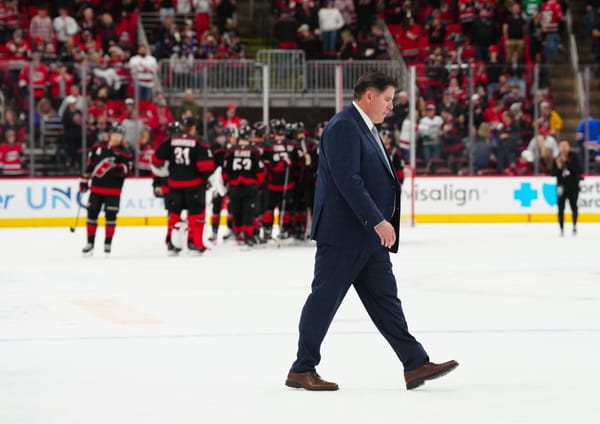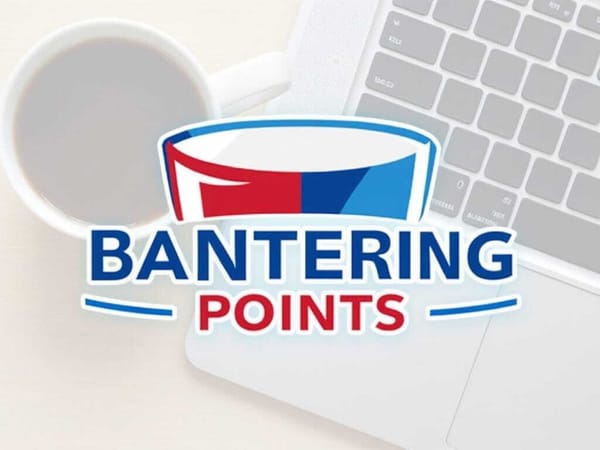Looking Back on Past New York Rangers Trade Deadline Moves: 2019 Edition
A look into the NYR 2019 Trade Deadline activity
As the 2022 trade deadline looms over us, inching closer by the minute, many NHL GMs are scrambling to find the best deal out there. If the New York Rangers’ GM Chris Drury decides the price is right, the team could be involved in one or more big name acquisitions throughout the next week. Theories are flying and rumors are spreading, but let’s take a step back from all that hoopla and take a trip down memory lane.
We’re going to revisit recent trade deadline deals, follow up on some of the loose ends such as prospects or draft picks that have changed hands, and ultimately try to decide if that year’s deadline could be labeled successful or not. The goal is to review a few deadline years over the next week to give ourselves a bit of a reprieve from all the chaos—a brief rest by the campfire, if you will. Here is the link to the review of 2020’s deadline to peruse if you’re interested.
2019 Trade Deadline
A year had passed since Gorton and Sather’s infamous letter detailing the Rangers’ plans to sell and rebuild the team. We saw some major trades in 2018 that completely overhauled the roster, but as the February 25th deadline approached in the 2018-19 season, another Rangers’ fan favorite began to see his fate unfold before him.
Mats Zuccarello Aasen, as he was known during his first Rangers stay, was an undersized Norwegian forward that had captured the heart of the city. Having only played for the New York Rangers, this specific season was challenging for him. At this point in his career, Zuccarello had something incredibly rare in professional sports: loyalty. Without an extension during the summer and playing out his contract year, it became quite clear that something was “not right” with Zucc. He was taking the possibility of being traded very harshly. The three-time Steven McDonald Extra Effort winner had struggled throughout early parts of the season.
As the year turned, Zuccarello became more public with his criticisms of his play and how he was dealing with the situation. Per Larry Brooks from the New York Post Zuccarello said “I mean, I’m a professional and have a responsibility to the team and my teammates. It’s been hard. I let it get to me. I need to let go of it and get back to being the Zukey everyone knows.” It was during this road trip that Zucc met with Rangers Head Coach David Quinn. They had a long chat about what they could and couldn’t control. Since the road trip in early January, Mats Zuccarello’s play returned to his old swagger and drastically improved.
As the deadline approached, it became more and more certain that Zuccarello and fellow UFA Kevin Hayes would be traded as any contract talks between their agents and Gorton had all but ceased. On February 23rd, two days before the deadline, Zuccarello was the first domino to fall. Gorton had moved him for a package of conditional picks. With the small Norwegian lighting up the league that month, a lot of pundits were anticipating or at the very least hoping for a first-round pick. But Gorton, who can both be commended and criticized for the return, had bet on hitting the jackpot with the conditions surrounding the second and third round draft pick they received for Zuccarello.
Zuccarello’s trade was just the first of a few moves the Rangers brass would make. As the day of the deadline arrived, the Blueshirts did indeed acquire that coveted first round pick from Winnipeg along with a conditional fourth round pick, and Brendan Lemieux with skilled big centerman Kevin Hayes going back the other way.
👀 @KevinPHayes12 #NHLTradeDeadline pic.twitter.com/nK9WrraMlu
— NHL (@NHL) February 25, 2019
It turns out the Rangers weren’t yet done as they found a suitor for recently acquired Adam McQuaid, trading him back to the team that had initially drafted him more than a decade prior, the Columbus Bluejackets.
Where Are They Now?
One can imagine after all the anticipation of his trade from New York, Zuccarello was relieved the day had finally come. Hitting the ice in Dallas, the small winger didn’t miss a beat until injury struck. He potted a goal and an assist in his very first game with the Stars, but then ultimately missed all but the last regular season game due to a broken arm. Zuccarello, playing through pain, managed to tie for the lead in points for the Dallas Stars that post season, scoring 4 goals and 7 assists in 13 games.
Ultimately Gorton’s gamble didn’t quite pay off. The conditions surrounding the trade were dependent on the Stars making it to the Western Conference Final and Zuccarello re-signing in Dallas. While the team brought the eventual Stanley Cup Champion St. Louis Blues to 7 games in the second round, their unexpected playoff run was cut short, and after some deliberation Zuccarello signed with the Minnesota Wild in the offseason. The two picks were finalized as the 49th overall pick in 2019, which the Rangers used to draft Matthew Robertson, who has been playing with the Wolf Pack, and the 92nd overall pick in 2020, which the Rangers used to draft Oliver Tärnström, who has been playing in the junior leagues in Sweden.
Kevin Hayes and the Winnipeg Jets didn’t make as much of a splash that post season as they bowed out to the St. Louis Blues in six games in the first round. This took the conditional fourth round pick off the board right away as it was dependent on Winnipeg winning it all. We all know the fate of Brendan Lemieux, who was sent to the Los Angeles Kings for a fourth-round pick that turned into University of Minnesota prospect Brody Lamb, but it’s what happened next that is perhaps the most interesting bit of the 2019 trade deadline thread for the New York Rangers.
Leading up to the draft in 2019, Winnipeg was interested in reacquiring a first-round pick, and with rumblings of a top defenseman on the team wanting to play in the United States starting to get out, it seemed there was actual fire behind all this smoke. Enter the New York Rangers: just three days before the draft, the Rangers traded the Winnipeg Jets their initial first round pick (No.20) and Neal Pionk for the rights to Jacob Trouba. New York promptly signed Trouba the following month to avoid arbitration and made Trouba a top ten paid defenseman in the league.
Last but not least comes the Adam McQuaid trade. Columbus didn’t make it too far into the playoffs, but they did dash any hope of the Rangers cashing in with a conditional first round pick from the Tampa Bay Lightning by sweeping the cup favorite. With the picks from this trade, the Rangers ended up drafting Hunter Skinner, who has been playing in Hartford this season, and Eric Ciccolini, who is in his junior year at the University of Michigan but hasn’t played since October due to a lower body injury.
Was It All Worth It?
In retrospect, it’s tough to confidently say these moves were worthwhile ones to make. While hindsight may be 20/20 and all that jazz, I don’t think any GM in the league anticipated Zuccarello’s continued surge of play, or that he would be on the brink of breaking his previous points total record with more than twenty games left to play in the season. I understand he is playing with a superstar in Kirill Kaprizov, but did anyone anticipate Zucc having one point less than our star center Zibanejad while having played ten games less this season? I don’t know if I’d believe you if you insisted on this being a premonition of yours.
Zuccarello was sacrificed as a cap casualty, and it’s a bit disappointing to think of what could have been. Would he be achieving the same success playing on a line with our own Russian superstar? Pondering the “what ifs” can lead you to a dark place, so let’s stick to facts. The team had a lot of moves planned and the signing of Panarin would not have been possible had they reupped Zuccarello. Sure, he most likely would have taken a team friendly deal, but as a player and a great human, he deserves to be paid what he’s worth, and honestly that discount still may not have been enough. The team was in a bit of a financial mess at the time and was looking to shed money and contracts. One thing for certain is while the payoff of Gorton’s gamble could have been deemed a master stroke of genius, Zuccarello absolutely was worth a first-round pick.
The Hayes trade and the subsequent swapping of Winnipeg’s first round pick and Neal Pionk for Jacob Trouba has at best been questionable. Looking at what both Trouba and Pionk have produced since going to their new teams, you may be surprised to learn Pionk has outscored Trouba with 105 points to Trouba’s 68. The thing is, the Rangers didn’t necessarily need Trouba to be that power play quarterback and score consistently. With the ascension of Adam Fox, Trouba’s offensive ability and impact became less important to the team.
After some adjustments in his first year with the Rangers, Trouba has been far from “bad” for the team—in fact, he often sets the tone physically, and has been a great mentor for younger defenseman. Is Trouba overpaid? Absolutely, but so is Neal Pionk. At the time, this trade was thought to be a clear win for the Rangers, but over time it’s gotten a bit muddier. And while I think deciding a winner and loser for this deadline swap will ultimately be decided by whether Brody Lamb or the player Winnipeg took with that first-round pick, Ville Heinola, turn out to be impact players, both teams got what they needed out of this swap and the Rangers got a physical and capable top-4 defenseman.
The Adam McQuaid trade was the team attempting to recoup their assets. They had sent a fourth and seventh round pick with Steven Kampfer to the Boston Bruins for McQuaid. They then got AHL defenseman Julius Bergman and Columbus’ fourth and seventh round pick when they offloaded McQuaid at the deadline. The picks they sent to Boston were both earlier in the draft than what they received from Columbus. In summary, they had moved down about 13 spots each pick just to rent Adam McQuaid for less than a full season. The Adam McQuaid experiment for the New York Rangers was 100% a failure.





